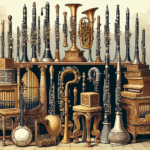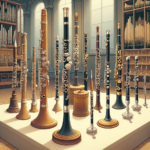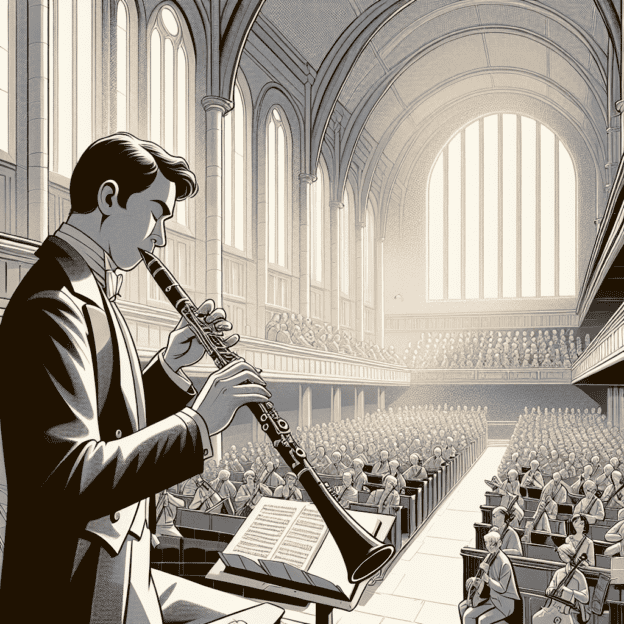Introduction to Martin Freres Clarinets in Historical Performances
When we talk about clarinets and their role in historical performances, the name Martin Freres stands out. Whether you're a seasoned performer enamored with classical motifs or a curious novice exploring the past, clarinets from this respected maker have built a reputation for blending tradition with artistry. But what exactly sets them apart?
A Brief History of the Clarinet
Let's take a trip through time. The clarinet isn't new to the music scene. Its history goes back centuries, slowly evolving into the sophisticated instrument we see today. During this development, Martin Freres became known for high-quality clarinets made for exceptional performances, especially those aiming for historical authenticity.
The Importance of Instrument Choice in Historical Performances
When playing compositions from the past, the instrument you choose matters a great deal. Each piece reflects its era — Baroque, Classical, Romantic — every musical period had specific expectations for tone and resonance. Musicians who want to bring these works to life often prefer clarinets that provide rich tones and capture the essence of the past. This is where a Martin Freres clarinet excels. Their design promotes balance, delivering clarity in the quietest pianissimo and full-bodied strength during crescendos.
| Era | Tonal Characteristics | Martin Freres Advantage |
|---|---|---|
| Baroque | Clear, articulate | Precise mechanics for ornaments |
| Classical | Balanced, refined | Even tone across registers |
| Romantic | Expressive, rich | Full-bodied sound in crescendos |
The Art of Matching Clarinet to Repertoire
Did you know there's a subtle art to pairing a clarinet with its repertoire? For example, playing Mozart's famous Clarinet Concerto requires an instrument that can capture delicate sounds while remaining fluid. Vintage-style clarinets, closely modeled after those used in the composer's time, help performers recreate original interpretations. Many musicians who have played Martin Freres clarinets say their instruments feel like a bridge between centuries. The sound they produce is truly impressive — both literally and figuratively!
Beyond the Instrument: Perfecting Historical Performance
Of course, a great historical performance needs more than just the right clarinet. Choosing the right reed, using proper embouchure techniques, and selecting the best ligature can greatly affect the sound. Many artists who focus on historical interpretation prefer softer reeds for older music, as these bring out subtle articulation and phrasing true to the period. Those who play Martin Freres instruments often mention how its versatile bore design works well when trying different reed setups.
Adapting Playing Style for Different Eras
Have you ever changed your playing style to fit a specific era? Historical performance often requires a different approach. The vibrato and flourishes that work well in modern jazz might seem out of place in a Baroque ensemble. For pieces by Bach, try using less vibrato — instead, focus on ornaments like grace notes and trills. Players who use Martin Freres clarinets often praise how responsive the instruments are, making it easier to perform these quick, delicate embellishments.
The Importance of Instrument Maintenance
Here's something many players don't think about enough: taking care of their instrument. Sure, you probably clean your clarinet after playing, but when was the last time you gave it a thorough check-up? A Martin Freres clarinet, known for its quality craftsmanship, sounds better for longer when well-maintained. Regular tasks like oiling a wooden clarinet or checking for leaky pads might seem basic, but they're just as important as tuning a high-end piano. Many players say that well-kept Martin Freres clarinets have a unique, robust sound — a testament to their lasting quality.
Blending Traditional and Modern Sounds
Let's consider how traditional clarinet sounds fit into today's music. Many forward-thinking musicians are rediscovering vintage models like those from Martin Freres. Why? These instruments often appear in recordings and concerts because of their authentic sound and historical feel. By combining older tones with new interpretations, musicians create interesting textures that grab listeners' attention. In my opinion, mixing old and new styles isn't just smart — it's downright magical!
Choosing the Right Practice Environment
What about finding the best place to practice? Historical music often sounds best in spaces similar to where it was first played. Rooms with high ceilings? They make the sound bigger. Stone walls? They create natural echoes. When you can, try playing your Martin Freres in these kinds of places. You might notice details in the sound that you'd miss in modern practice rooms. Plus, these settings can make you feel like you're stepping back in time during rehearsals.
Collecting Vintage Martin Freres Clarinets
For those thinking about adding to their clarinet collection, old Martin Freres models are popular among both hobbyists and professional players. Performances focused on historical accuracy need instruments that can create the textures and tones the composers intended, and many collectors really appreciate Martin Freres clarinets for this reason. Looking through secondhand or vintage markets might help you find some real treasures worth fixing up and keeping for years to come!
Conclusion: The Legacy of Martin Freres Clarinets
In conclusion, using a Martin Freres clarinet for historical performances isn't just about having an instrument — it's about connecting with a rich history of sound, style, and innovation. While no clarinet can instantly make you play like Benny Goodman or Sabine Meyer, the careful design and history of these instruments can inspire your musical journey. With good care, they'll be your musical companions for many years, helping you tell stories through music. If these instruments could speak, their tales would surely be as rich as the music they help create!
Table of Contents
- Introduction to Martin Freres Clarinets in Historical Performances
- A Brief History of the Clarinet
- The Importance of Instrument Choice in Historical Performances
- The Art of Matching Clarinet to Repertoire
- Beyond the Instrument: Perfecting Historical Performance
- Adapting Playing Style for Different Eras
- The Importance of Instrument Maintenance
- Blending Traditional and Modern Sounds
- Choosing the Right Practice Environment
- Collecting Vintage Martin Freres Clarinets
- Conclusion: The Legacy of Martin Freres Clarinets







